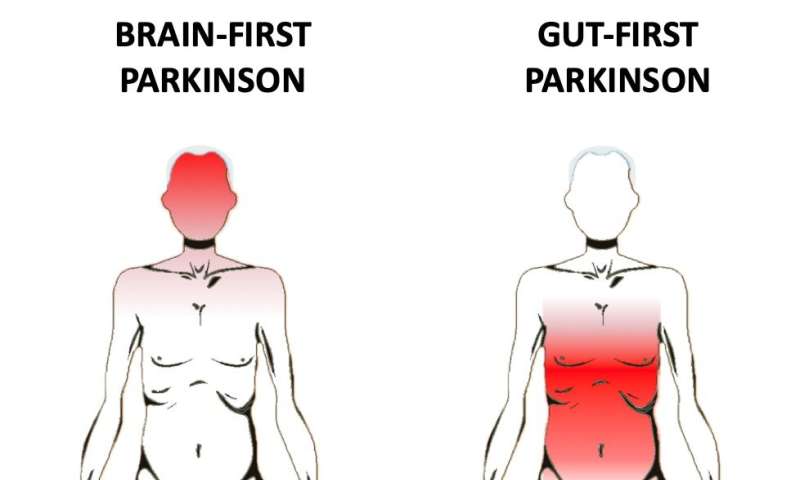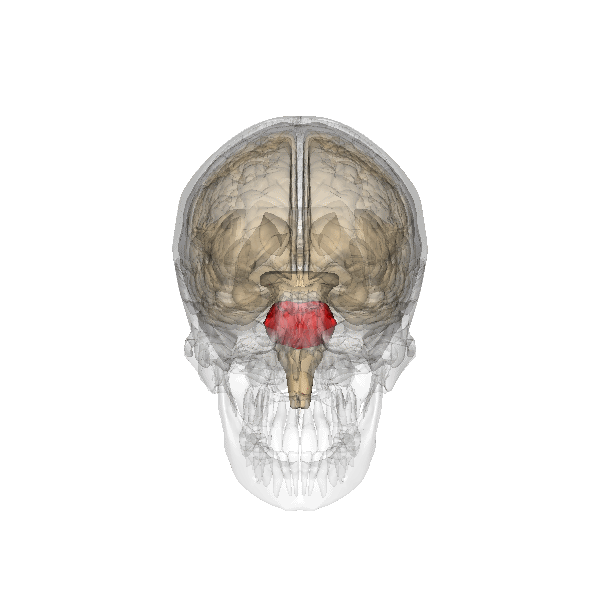A study which has just been published in the leading neurology journal Brain, indicates that Parkinson's disease is not one but two diseases, starting either in the brain or in the intestines.
These two groups of patients displayed strikingly different profiles on multimodal imaging battery.
These profiles support the existence of a brain-first and body-first subtype of Parkinson’s disease, and furthermore, that premotor rapid eye movement sleep (REM) sleep behaviour disorder is a highly predictive marker of the body-first subtype.

Neuropathological autopsy studies of patients with Parkinson’s disease, dementia with Lewy bodies, or incidental Lewy body disease have shown discrepant results.
Heiko Braak’s staging system was derived from a cohort of patients, who were selected based on the presence of Lewy pathology in the dorsal motor nucleus of the vagus, and all these patients conformed to a brainstem predominant type.
Other studies reported that some post-mortem cases do not harbour Lewy pathology in the dorsal motor nucleus of the vagus, and a minority of patients do not follow the Braak staging scheme.
A pathological hallmark of Parkinson’s disease is the presence of intraneuronal a-synuclein inclusions termed Lewy pathology. However, it remains unknown from where the initial a-synuclein aggregates originate.
It has been hypothesized that a-synuclein inclusions initially form in nerve terminals of the enteric nervous system, and then subsequently spread via autonomic connections to the dorsal motor nucleus of the vagus and intermediolateral cell columns of the sympathetic system (Braak et al., 2003).
In addition, Lewy pathology has been detected in gastrointestinal nerve fibres years prior to Parkinson’s disease diagnosis. There is also epidemiological evidence that complete but not partial vagotomy may protect against later Parkinson’s disease.
Autopsy studies have shown that a minority of cases with Lewy pathology do not have pathological inclusions in the dorsal motor nucleus of the vagus, and that a fraction of cases display a limbic-predominant distribution of a-synuclein inclusions with less pathology in the brainstem.
The scientists hypothesized that the appearance of isolated REM sleep behaviour disorder well before parkinsonism is a strong marker of the body-first subtype. The presence of REM sleep behaviour disorder in the premotor phase is a marker of the body-first type, probably a reflection of ascending a-synuclein pathology reaching the pons before the substantia nigra.
 The substantia nigra in the brain.
Source Wikipedia
The substantia nigra in the brain.
Source Wikipedia
To test this hypothesis, they recruited de novo patients with Parkinson’s disease and performed video-polysomnography to divide patients into de novo Parkinson’s disease without REM sleep behaviour disorder and de novo Parkinson’s disease with pre-motor REM sleep behaviour disorder. The study was conducted between August 2018 and January 2020.
The scientists have shown that prodromal and de novo patients with Parkinson’s disease can be categorized by means of multimodal imaging into distinct clusters, which are compatible with a brain-first and body-first Parkinson’s disease subtype.
Their conclusion is that the Parkinson’s disease comprises two subtypes: (i) a body-first (bottom-up) subtype, where the pathology originates in the enteric or peripheral autonomic nervous system, and then ascends via the vagus nerve and sympathetic connectome to the CNS;
(ii) a brain-first (top-down) subtype, in which the a-synuclein pathology initially arises in the brain itself or sometimes enters via the ol- factory bulb, and subsequently descends to the peripheral autonomic nervous system.
Body-first (bottom-up) subtype:
The initial a-synuclein pathology appears in the enteric or peripheral autonomic nervous system. It then propagates via the sympathetic connectome to the heart, and via the vagus nerve to the dorsal motor nucleus of the vagus.
 The pons area in the brain.
Source Wikipedia
The pons area in the brain.
Source Wikipedia
Ascending pathology affects pontine structures giving rise to REM sleep behaviour disorder before the substantia nigra shows substantial involvement. When parkinsonism appears, signifying a loss of 450% of nigrostriatal dopamine terminals, all lower Braak stage structures show marked damage on relevant imaging markers.
Brain-first (top-down) subtype: In the brain-first type, the initial a-synuclein pathology appears in the CNS. The most likely site of origin seems to be the amygdala or connected structures, or the pathology may in some cases enter via the olfactory bulb. Rarely, the pathology arises in the upper brainstem (substantia nigra or locus coeruleus). The pathology spreads from the site of origin to the brainstem and cortex. When parkinsonism appears, the brainstem shows a rostro-caudal gradient of pathology with marked involvement of the substantia nigra, moderate involvement of the neighbouring pons, but little involvement of the medulla and autonomic nervous system.
Citation: Jacob Horsager et al, Brain-first versus body-first Parkinson's disease: a multimodal imaging case-control study, Brain (2020). DOI: 10.1093/brain/awaa238
